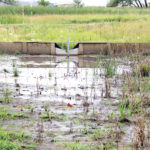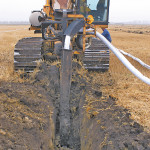
Tag Archives Tile drainage

Four-part webinar series takes tile drainage education into the digital age
A recent educational effort by Agriculture Manitoba and the Red River Basin Commission means farmers are staying home to take in information on tile drainage

Retention not needed for tile installation
Tile drainage can increase yields, but increased returns require carefully crunched numbers

How much nitrogen could a wood chip chuck?
Researchers investigating wood chip bioreactors under Manitoba conditions say half the nitrogen in tile drainage run-off could be captured

Literature review for research on manured, tile-drained land being sought
Manitoba Livestock Manure Management Initiative Inc. wants to see what scientists have already discovered and consider how it might fit under Manitoba conditions

Considering the true cost of agricultural production systems
Externalizing the cost of production is becoming less acceptable to society

Interest in drainage expected to grow
As the province’s newest water management association pulls away from the dock, new members are invited on board
Water management — drainage is expensive, but so is flooding
Panellists at last winter’s Potato Production Days discussed options for handling the excess rain of recent years
Any farmer will tell you that flooding is a major hassle and cost to any farm when it happens — but just how big that bill can be has always been a bit of a guess. A recent report by BMO Economics (Bank of Montreal) put a figure on it though, says Dr. Ranjan Sri

